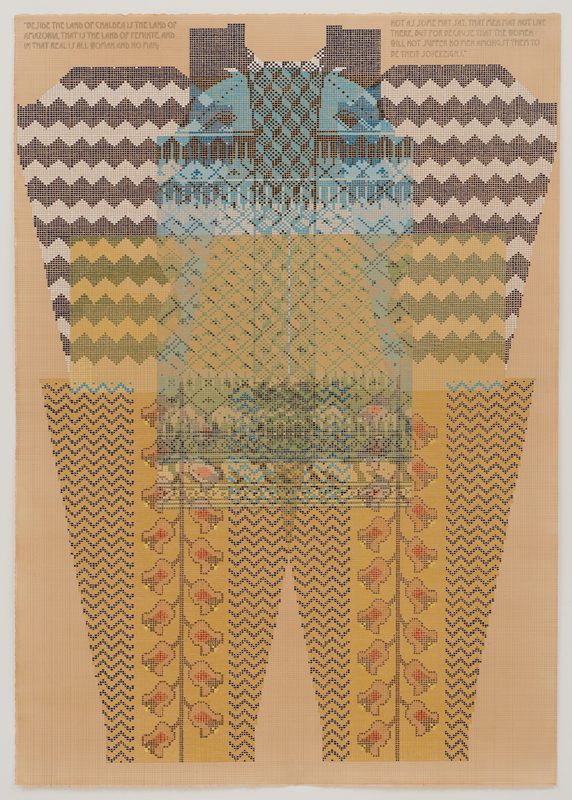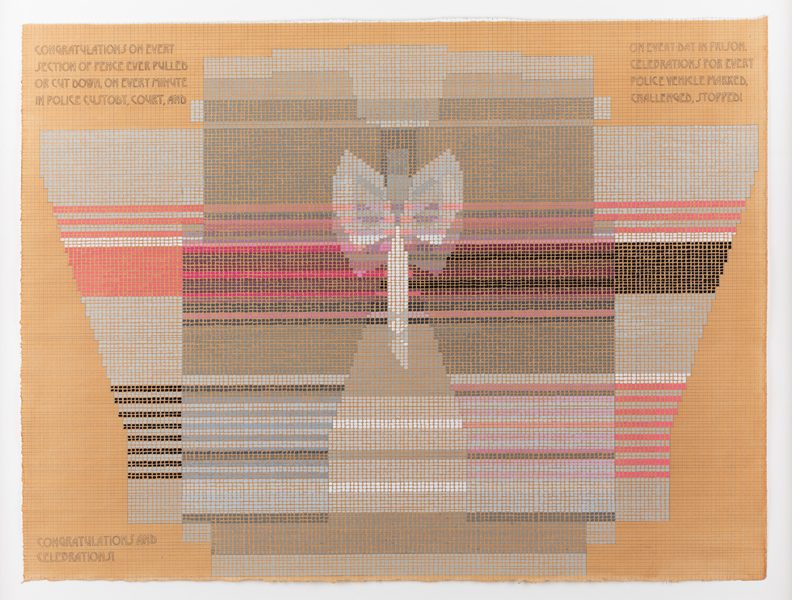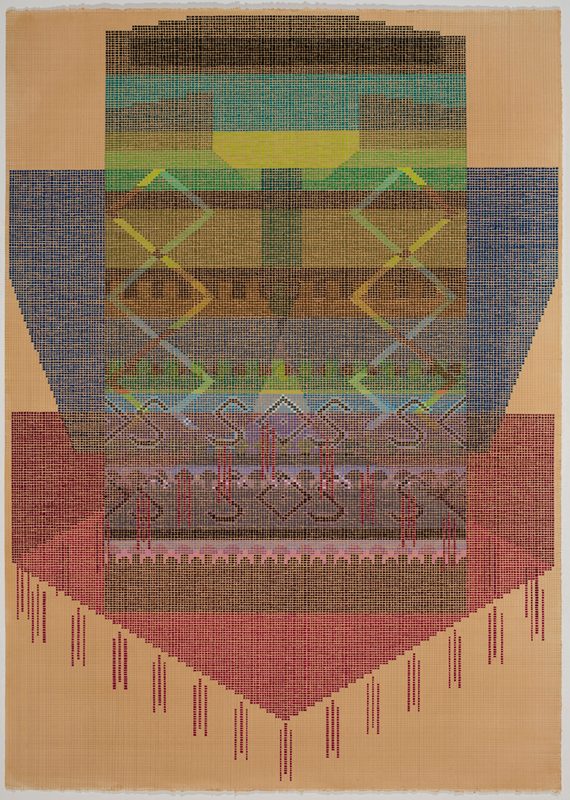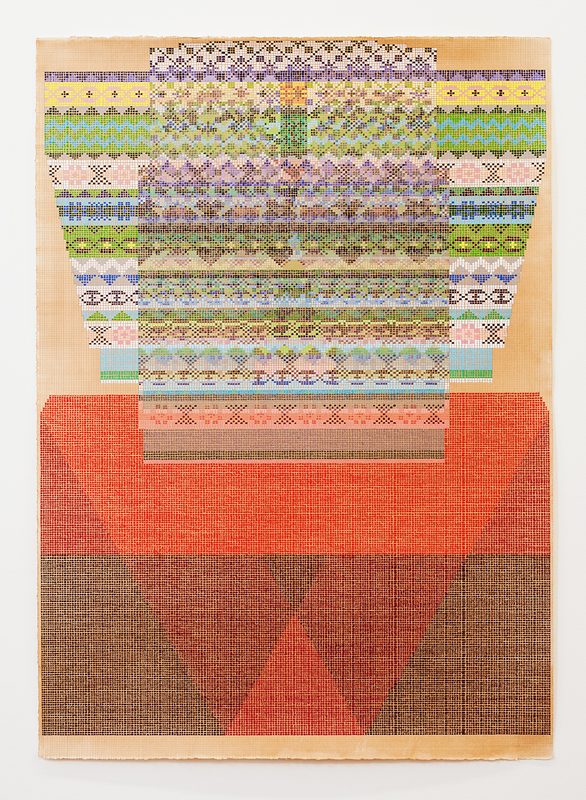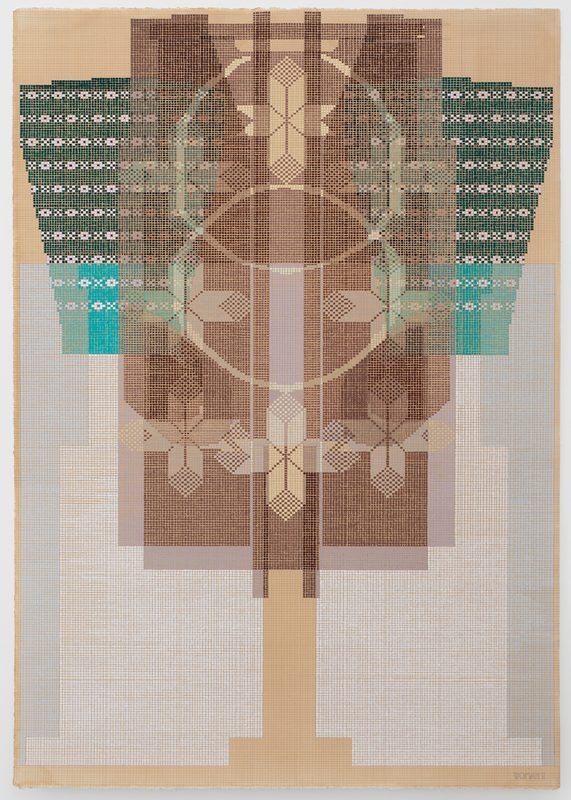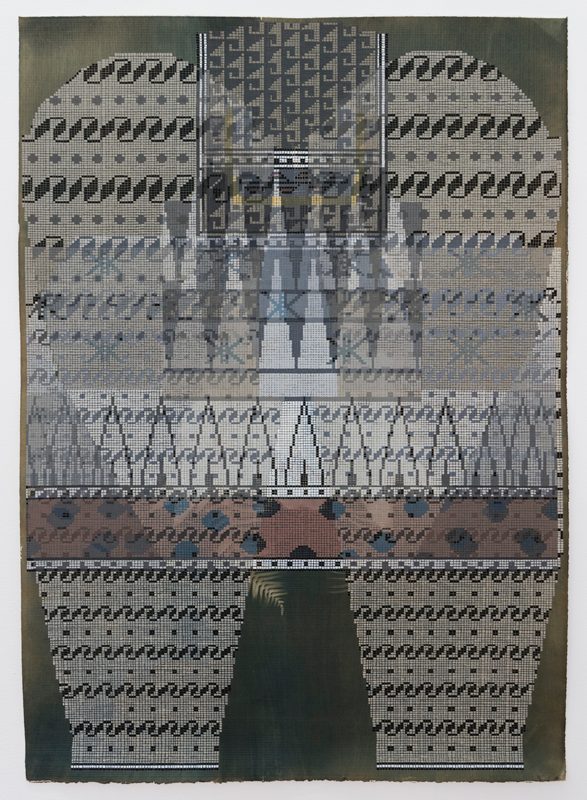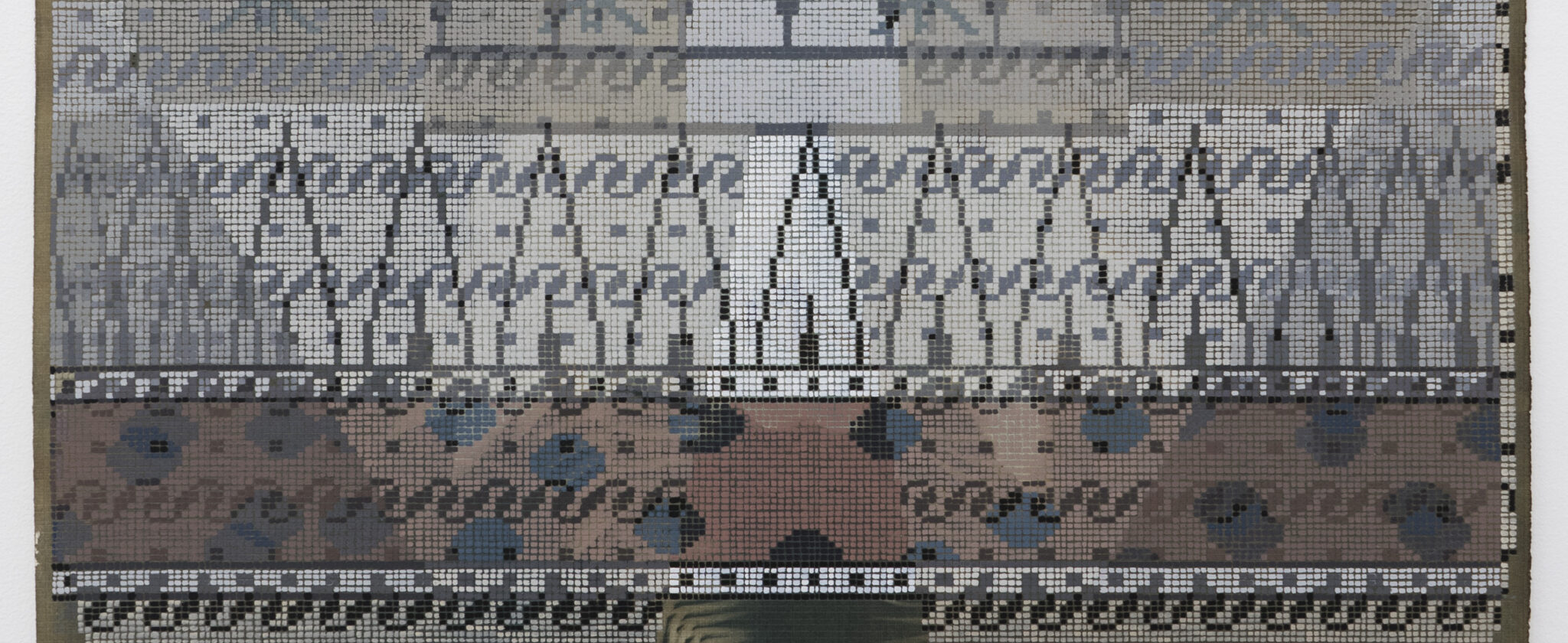
Ellen Lesperance, "Wounded Amazon (Pulse)," detail, 2016; gouache and graphite on treated cyanotype, 30 x 41 inches
Ellen Lesperance
Artist Statement
My gouache paintings on paper can be followed as patterns to recreate historic knit garments worn by women at protests, sit-ins, demonstrations, and during other acts of civil disobedience. The paintings are reliant on my research, which seeks out activists’ handmade articles of clothing that function, like other forms of creative direct action (such as picket signs, banners, street theater) as argumentative ideological tools. Analyzing a sweater’s gauge of yarn, cut, and construction, I paint its pattern square by square, stitch by stitch. Pattern, shape, and symmetry emerge in these highly-detailed compositions that merge figuration and abstraction, while always very directly referencing the female body. I make this work in order to memorialize the glory of effective resistance, in an effort that these moments do not vanish from popular memory, and in an effort that these actions can reach new audiences to inspire.
While At Headlands
I plan on making new paintings inspired by the Greenham Commons Women’s Peace Camp, a site of resistance in Berkshire, England from 1982–2000 that has been especially inspirational to my practice of painting protest garments. I am very interested in that site’s strange thematic consistency with the Marin Headlands—one the storage facility for the largest nuclear missile payload in Europe during the Cold War, and one the site of the SF-88 Nike Missile. Prior to my Headlands residency, I will be conducting new research in Manchester, England at the People’s History Museum, thinking that it will fuel new work for the residency, and help me form a conceptual link between locations. I will also be continuing experiments with brand new work that uses alternative photo processes as painting grounds and examines the costuming of Amazon warriors depicted on ancient ceramics.

